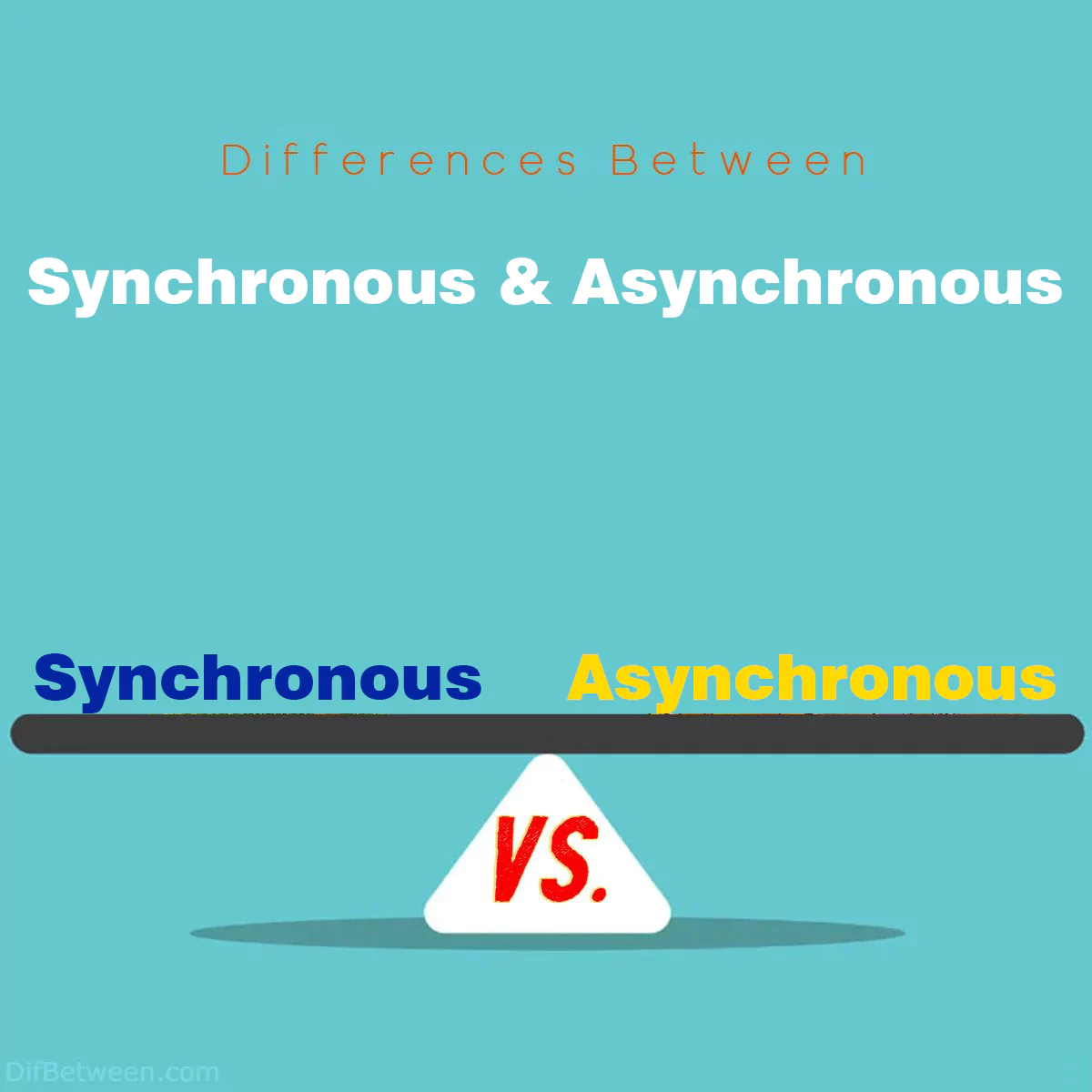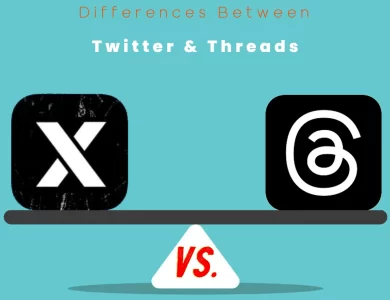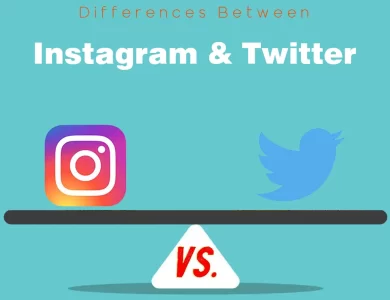
| Aspect | Synchronous Learning | Asynchronous Learning |
|---|---|---|
| Scheduling and Timing | Real-time, fixed schedules | Flexible, at the learner’s pace |
| Interaction | Immediate, real-time | Delayed, typically through forums |
| Flexibility | Limited due to fixed schedules | High due to self-paced approach |
| Convenience | May not suit busy schedules | Ideal for those with time constraints |
| Communication | Face-to-face via video calls | Text-based, via forums/email |
| Inclusivity | May exclude some time zones | Inclusive of diverse schedules |
| Learning Pace | Instructor-driven | Self-paced |
| Curriculum Control | Instructors set the pace | Learners control the pace |
| Flexibility | Limited | High |
| Self-Discipline | Less autonomy, more guidance | Greater autonomy, self-directed |
| Material Delivery | Real-time during classes | Pre-recorded and on-demand |
| Accessibility | Limited to scheduled times | Available at any time |
| Review Opportunities | Limited | Abundant, can revisit content |
| Assessment Timing | Timed, during classes | Extended deadlines |
| Feedback Timing | Immediate | Delayed |
| Procrastination Risk | Lower due to fixed deadlines | Higher due to flexibility |
| Internet Reliance | High, real-time interaction | Moderate, content accessible offline |
| Hardware Requirements | Stable internet, webcam, microphone | Internet access, device flexibility |
| Technical Proficiency | Instructors need expertise in live tools | Lower tech proficiency required |
In the ever-evolving landscape of education, two prominent approaches have emerged – Synchronous and Asynchronous Learning. Both methods cater to the diverse needs of learners, but they have distinct characteristics that set them apart. In this comprehensive guide, we will delve into the key differences between these two modes of learning. So, whether you’re a student, teacher, or simply someone curious about the world of education, read on to discover the nuances of synchronous and asynchronous learning.
Differences Between Synchronous and Asynchronous Learning
Synchronous and asynchronous learning are two distinct approaches in the realm of education. The primary differences between them lie in the timing and interaction aspects. Synchronous learning occurs in real-time, demanding simultaneous participation of instructors and learners, akin to traditional classrooms, while asynchronous learning offers flexibility, allowing learners to access course materials at their convenience. The former thrives on immediate interaction, while the latter relies on delayed communication through forums or emails. Ultimately, the choice between these modes depends on individual preferences and scheduling constraints, with synchronous learning fostering real-time engagement and asynchronous learning providing adaptability and inclusivity for learners with diverse schedules.
Scheduling and Timing
Synchronous Learning:
Synchronous learning, as the name suggests, occurs in real-time. It demands that both the instructor and learners are present at the same time and place, albeit virtually in most cases. This mode of learning closely resembles traditional classroom settings, with scheduled classes, lectures, or meetings conducted via video conferencing tools, webinars, or live chats.
One of the primary advantages of synchronous learning is the immediate interaction it allows. Learners can ask questions, seek clarification, and engage in discussions with their instructors and peers in real-time. This fosters a sense of community and can enhance the learning experience. However, the rigidity of fixed schedules can be a drawback for those with time constraints or conflicting commitments.
Asynchronous Learning:
In contrast, asynchronous learning offers flexibility in terms of timing. Learners are not bound to attend classes or activities at specific times. Instead, they have the freedom to access course materials, lectures, and assignments at their convenience. This mode of learning relies heavily on pre-recorded content, discussion boards, email correspondence, and self-paced modules.
The flexibility of asynchronous learning is its biggest advantage. It accommodates individuals with busy schedules, allowing them to balance their education with work, family, and other commitments. However, the absence of real-time interaction can be a drawback for learners who thrive on immediate feedback and peer engagement.
Here’s a quick comparison table highlighting the key differences in scheduling and timing between synchronous and asynchronous learning:
| Aspect | Synchronous Learning | Asynchronous Learning |
|---|---|---|
| Timing | Real-time | Flexible, at the learner’s pace |
| Interaction | Immediate | Delayed, typically through forums |
| Flexibility | Limited due to fixed schedules | High due to self-paced approach |
| Convenience | May not suit busy schedules | Ideal for those with time constraints |
Communication and Interaction
Synchronous Learning:
Synchronous learning thrives on real-time communication. Instructors and learners can engage in discussions, Q&A sessions, and collaborative activities as if they were in a physical classroom. Video conferencing tools like Zoom, Microsoft Teams, or Google Meet facilitate face-to-face interactions, enhancing the feeling of connectedness.
The immediacy of synchronous learning allows for spontaneous discussions and instant feedback, promoting a dynamic exchange of ideas. This is particularly beneficial for subjects that require active dialogue and debate, such as philosophy or language courses.
Asynchronous Learning:
In asynchronous learning, communication is often delayed. Learners and instructors do not interact in real-time but rather through asynchronous channels like discussion boards, email, or messaging platforms. While this mode of communication lacks the spontaneity of synchronous learning, it offers certain advantages.
Asynchronous communication provides learners with ample time to formulate their thoughts and responses. This can be especially helpful for introverted or contemplative individuals who may feel more comfortable expressing themselves in writing rather than in real-time discussions. It also accommodates learners from different time zones, ensuring that nobody is excluded due to scheduling conflicts.
Let’s summarize the key differences in communication and interaction:
| Aspect | Synchronous Learning | Asynchronous Learning |
|---|---|---|
| Real-time | Yes | No |
| Communication | Immediate and spontaneous | Delayed and thoughtful |
| Interaction | Face-to-face via video calls | Text-based, via forums/email |
| Inclusivity | May exclude some time zones | Inclusive of diverse schedules |
Self-Paced Learning vs. Structured Courses
Synchronous Learning:
Synchronous learning follows a structured format, much like traditional classroom courses. Instructors set a curriculum, schedule classes, and dictate the pace of learning. This can be beneficial for learners who thrive in a highly organized and regimented environment. However, it may not suit those who struggle to keep up with a fixed timetable or prefer a more individualized learning experience.
Structured synchronous courses often include assignments, quizzes, and assessments that are due on specific dates. This keeps learners on track and ensures that they cover the material in a timely manner. On the flip side, it leaves little room for exploring topics in-depth or revisiting content at one’s own pace.
Asynchronous Learning:
Asynchronous learning, on the other hand, is inherently self-paced. Learners have the freedom to progress through the material at their own speed, revisiting concepts as needed. This flexibility is particularly advantageous for individuals with varying levels of prior knowledge or those who wish to delve deeper into specific topics.
In an asynchronous course, content is typically organized into modules or units that learners can access sequentially. Assessments and assignments often come with extended deadlines or are open for submission over an extended period. While this autonomy empowers learners, it also requires self-discipline to stay motivated and on track.
Here’s a summary of the differences between self-paced learning in asynchronous settings and structured courses in synchronous settings:
| Aspect | Synchronous Learning | Asynchronous Learning |
|---|---|---|
| Learning Pace | Instructor-driven | Self-paced |
| Curriculum Control | Instructors set the pace | Learners control the pace |
| Flexibility | Limited | High |
| Self-Discipline | Less autonomy, more guidance | Greater autonomy, self-directed |
Course Material Delivery
Synchronous Learning:
Course material in synchronous learning is typically delivered in real-time during scheduled classes. Instructors may use slideshows, live demonstrations, or interactive whiteboards to present information. Learners are expected to be present during these sessions to engage with the content.
One of the benefits of real-time material delivery is that learners can immediately seek clarification if they encounter difficulties. However, this also means that those who miss a session may struggle to catch up.
Asynchronous Learning:
In asynchronous learning, course materials are pre-recorded and made available for learners to access at their convenience. These materials can take various forms, including video lectures, written documents, podcasts, and interactive multimedia presentations.
The advantage of asynchronous course material delivery is that it can be accessed repeatedly, allowing learners to review content as needed. This is particularly beneficial for complex or challenging subjects. However, the absence of real-time explanations can be a drawback for learners who require immediate guidance.
Let’s summarize the differences in course material delivery between synchronous and asynchronous learning:
| Aspect | Synchronous Learning | Asynchronous Learning |
|---|---|---|
| Material Delivery | Real-time during classes | Pre-recorded and on-demand |
| Accessibility | Limited to scheduled times | Available at any time |
| Review Opportunities | Limited | Abundant, can revisit content |
Assessment and Evaluation
Synchronous Learning:
Assessment and evaluation in synchronous learning often mirror traditional methods. Instructors may conduct quizzes, tests, or assignments during scheduled class hours. These assessments are typically timed and require learners to complete them in real-time.
Immediate feedback is a hallmark of synchronous assessment. Learners receive their scores and comments promptly, allowing them to gauge their understanding and make necessary improvements. However, the pressure of timed assessments can be stressful for some individuals.
Asynchronous Learning:
In asynchronous learning, assessments are designed to accommodate the self-paced nature of the course. This means that quizzes, tests, and assignments often have extended deadlines, allowing learners to submit their work within a specified timeframe that suits their schedule.
While asynchronous assessment provides flexibility, it may result in delayed feedback. Instructors need time to review and grade submissions, which can lead to longer waiting periods for learners to receive their results. Additionally, some learners may procrastinate without the structure of regular deadlines.
To sum up the differences in assessment and evaluation:
| Aspect | Synchronous Learning | Asynchronous Learning |
|---|---|---|
| Assessment Timing | Timed, during classes | Extended deadlines |
| Feedback Timing | Immediate | Delayed |
| Procrastination Risk | Lower due to fixed deadlines | Higher due to flexibility |
Technology Requirements
Synchronous Learning:
Synchronous learning relies heavily on technology for real-time interaction. Learners and instructors need access to stable internet connections, video conferencing tools, microphones, and webcams. This mode of learning demands that both parties are online simultaneously, which can be challenging for those with unreliable internet access or outdated hardware.
Instructors must also be proficient in using online teaching platforms and troubleshooting technical issues that may arise during live sessions.
Asynchronous Learning:
Asynchronous learning is generally more forgiving in terms of technology requirements. While learners still need access to the internet to access course materials and submit assignments, they have greater flexibility in how and when they engage with the content.
This mode of learning is often considered more inclusive because it accommodates individuals with limited access to high-speed internet or modern technology. It also allows learners to choose the devices and software that best suit their needs.
To summarize the differences in technology requirements:
| Aspect | Synchronous Learning | Asynchronous Learning |
|---|---|---|
| Internet Reliance | High, real-time interaction required | Moderate, content accessible offline |
| Hardware Requirements | Stable internet, webcam, microphone | Internet access, device flexibility |
| Technical Proficiency | Instructors need expertise in live tools | Lower tech proficiency required |
Synchronous or Asynchronous Learning : Which One is Right Choose for You?
In the world of online education, the choice between synchronous and asynchronous learning can significantly impact your learning experience. Each approach has its unique advantages and disadvantages, and the right choice depends on your individual preferences, needs, and circumstances. Let’s explore both options to help you make an informed decision.
Synchronous Learning: The Live Experience
Is Synchronous Learning Right for You?
- You thrive on real-time interaction with instructors and peers.
- Immediate feedback and clarification are essential for your learning style.
- You prefer a structured schedule that mimics traditional classroom settings.
- You have a stable internet connection and access to the necessary technology.
- You enjoy the sense of community that comes from attending live classes.
Pros of Synchronous Learning:
- Real-Time Interaction: Synchronous learning allows you to engage in discussions, ask questions, and collaborate with instructors and classmates in real-time, fostering a dynamic learning environment.
- Immediate Feedback: Timely answers to your queries and instant feedback on assignments can enhance your understanding of the subject matter.
- Structured Schedule: If you benefit from a fixed timetable that keeps you accountable, synchronous classes offer a sense of routine and discipline.
- Community Building: Regular live sessions create opportunities to build relationships with instructors and peers, providing a supportive learning network.
Cons of Synchronous Learning:
- Limited Flexibility: Fixed schedules may clash with other commitments, making it challenging for those with busy lifestyles.
- Technology Dependence: Synchronous learning demands a reliable internet connection and specific hardware like webcams and microphones.
- Time Zone Constraints: It may not be ideal for learners in different time zones, as live classes may occur during inconvenient hours.
Asynchronous Learning: The Flexible Approach
Is Asynchronous Learning Right for You?
- You prefer to learn at your own pace and have control over your study schedule.
- Flexibility is essential because of work, family, or other commitments.
- You’re comfortable with self-directed learning and don’t require immediate feedback.
- You have varying levels of prior knowledge and want the freedom to explore topics deeply.
- You seek inclusivity, as asynchronous learning accommodates different time zones and schedules.
Pros of Asynchronous Learning:
- Flexibility: Asynchronous learning allows you to access course materials and complete assignments when it suits you, accommodating your busy life.
- Self-Paced Learning: You have the freedom to progress at your own speed, revisiting content as needed to enhance comprehension.
- Inclusivity: This mode of learning caters to learners worldwide, as time zone differences and scheduling conflicts are less of an issue.
- Varied Content: Asynchronous courses often offer a wide range of multimedia materials, providing diverse learning experiences.
Cons of Asynchronous Learning:
- Lack of Real-Time Interaction: You won’t experience immediate feedback or spontaneous discussions with instructors and peers.
- Self-Discipline Required: The autonomy of asynchronous learning demands self-motivation and time management skills to stay on track.
- Potential for Procrastination: Without fixed deadlines, some learners may struggle with procrastination and time management.
Making Your Choice
Ultimately, the decision between synchronous and asynchronous learning hinges on your personal preferences and circumstances. Consider your learning style, schedule, access to technology, and the level of interaction you desire.
- Choose Synchronous Learning If: You thrive on real-time interaction, need immediate feedback, and prefer a structured schedule. Ensure you have a stable internet connection and can commit to the fixed class times.
- Choose Asynchronous Learning If: Flexibility is crucial due to other commitments, you’re comfortable with self-paced learning, or you seek inclusivity for learners from diverse backgrounds.
In some cases, a hybrid approach may also be an option, combining elements of both synchronous and asynchronous learning to strike a balance that suits your needs. Whichever mode you choose, remember that online education offers opportunities for personalized learning like never before, empowering you to tailor your education to your unique requirements.
FAQs
Synchronous learning is an educational approach where instructors and learners engage in real-time interactions. It often involves scheduled live classes, video conferencing, or webinars, simulating a traditional classroom setting.
Asynchronous learning is a mode of education that offers flexibility, allowing learners to access course materials and complete assignments at their own pace. It does not require real-time participation and relies on pre-recorded content and forums.
Synchronous learning provides immediate interaction, live feedback, and a structured schedule. It fosters a sense of community and suits learners who thrive on real-time discussions.
Asynchronous learning offers flexibility, inclusivity for diverse schedules, and the freedom to learn at one’s own pace. It accommodates individuals with busy lifestyles and varying levels of prior knowledge.
The choice between synchronous and asynchronous learning depends on your learning style, schedule, and access to technology. If you prefer real-time interaction and structured schedules, synchronous learning may be ideal. If flexibility and self-pacing are crucial, asynchronous learning is a better fit.
Some educational institutions offer hybrid models that combine both approaches. However, the ease of switching between modes depends on the specific course and institution policies.
Staying motivated in asynchronous learning requires self-discipline and time management. Setting goals, creating a study routine, and engaging with course materials regularly can help you stay on track.
Yes, synchronous learning may pose challenges for learners in different time zones, as live classes may occur during inconvenient hours. Some instructors may offer alternative session times to accommodate diverse schedules.
Synchronous learning requires a stable internet connection and access to video conferencing tools, such as Zoom or Microsoft Teams. You’ll also need a device with a webcam and microphone.
Most asynchronous course materials are accessible online. However, you may be able to download some resources for offline viewing, depending on the course platform and instructor preferences.
Read More :
Contents






